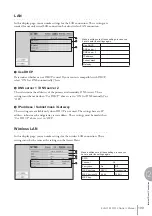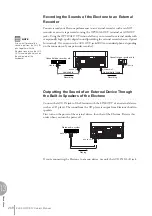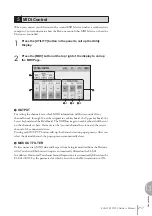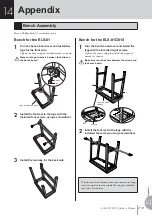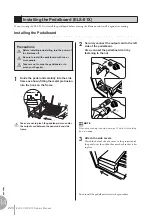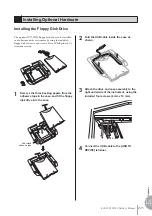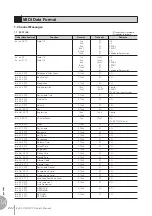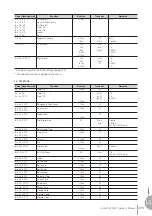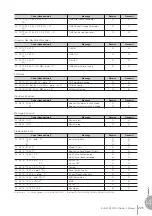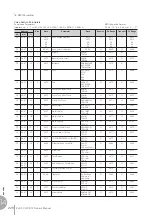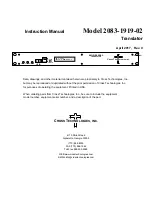
Connections
13
ELS-01/01C/01X Owner’s Manual
213
● ● ● ● ● ● ● ● ● ● ● ● ● ● ● ● ● ● ● ● ● ● ● ● ● ● ● ● ● ● ● ● ● ● ● ● ● ●
Using the MIDI IN/OUT terminals
By using an optional MIDI interface such as the UX16, you can connect the Electone
to the computer, with the MIDI IN/OUT terminals on the instrument. Connect the
Electone and the MIDI Interface with two standard MIDI cables (one connecting the
OUT terminal on the Electone to the MIDI IN terminal on the interface, and the
other connecting the IN terminal on the Electone to the MIDI OUT terminal on the
interface). Connect the MIDI interface to the computer with a USB cable.
This section explains what MIDI is, and what it can do, as well as how you can use
MIDI on your Electone.
● ● ● ● ● ● ● ● ● ● ● ● ● ● ● ● ● ● ● ● ● ● ● ● ● ● ● ● ● ● ● ● ● ● ● ● ● ●
What is MIDI?
No doubt you have heard the terms “acoustic instrument” and “digital instrument.”
In the world today, these are the two main categories of instruments. Let’s consider a
grand piano and a classical guitar as representative acoustic instruments. They are easy
to understand. With the piano, you strike a key, and a hammer inside hits some strings
and plays a note. With the guitar, you directly pluck a string and the note sounds. But
how does a digital instrument go about playing a note?
NOTE
Depending on your particular
MIDI interface, you may have
to connect the MIDI Interface
and the computer with a
serial cable.
4
MIDI
MIDI
IN
OUT
MIDI OUT
MIDI IN
Computer
MIDI Interface
(for example, UX16)
Internal amp
Internal amp Tone generator
(Electric circuit)
Playing the keyboard
R
L
Acoustic guitar note production
Digital instrument note production
Pluck a string and the body resonates
the sound.
Based on playing information from the keyboard,
a sampled note stored in the tone generator is
played through the speakers.
Summary of Contents for Electone Stagea 01C
Page 245: ...Appendix 1 4 ELS 01 01C 01X Owner s Manual 245 MEMO ...
Page 247: ......

